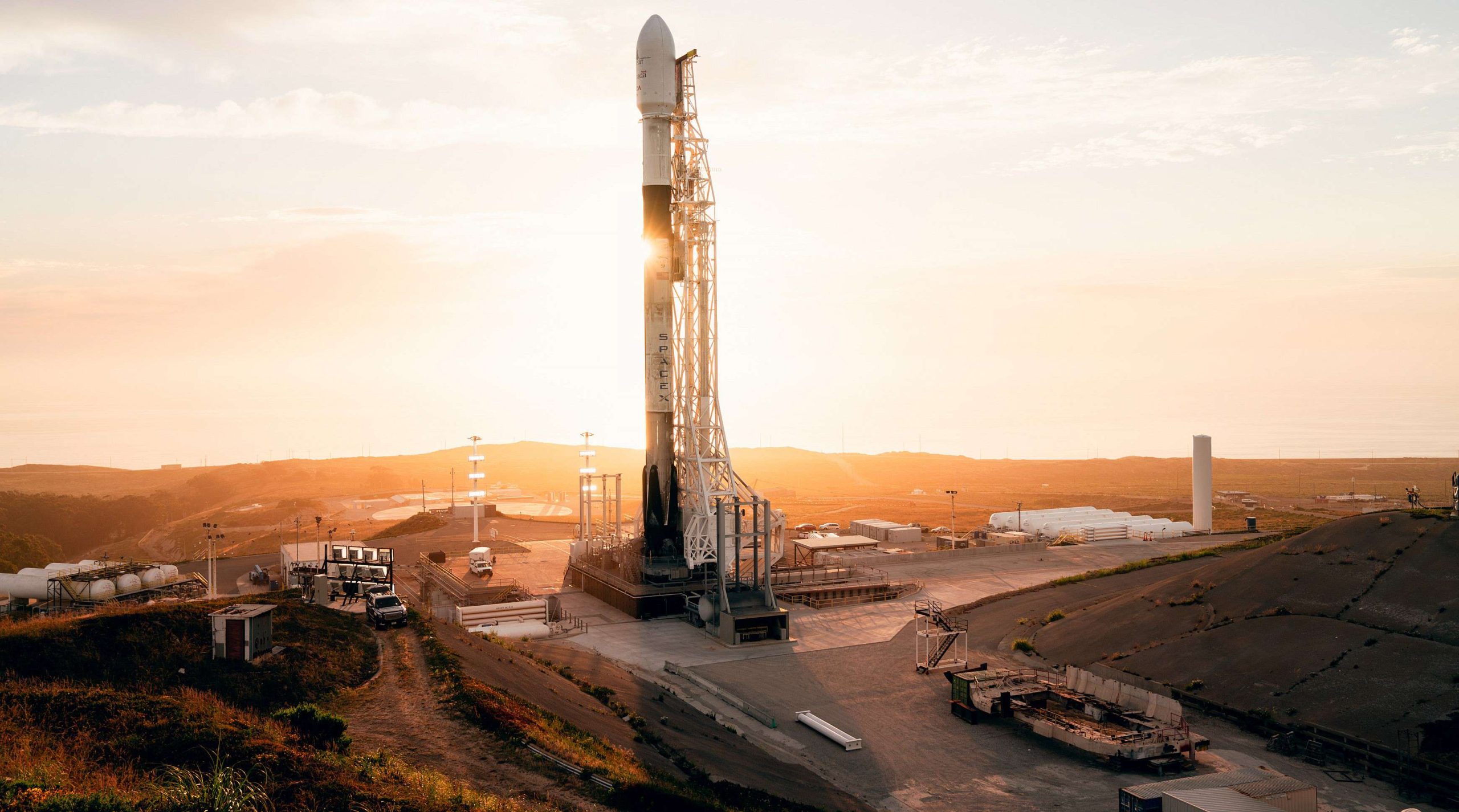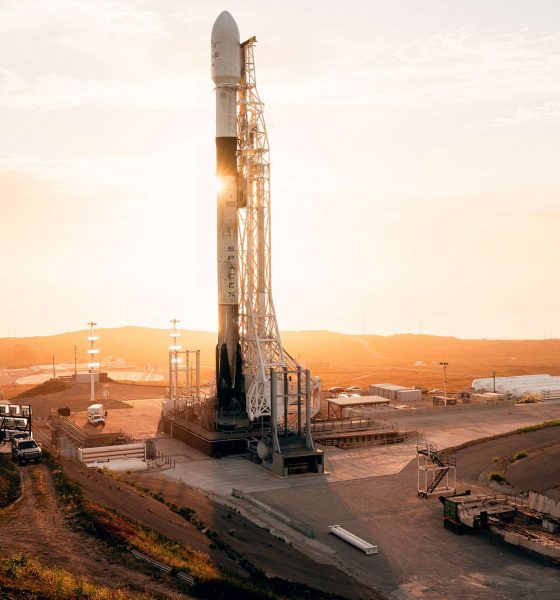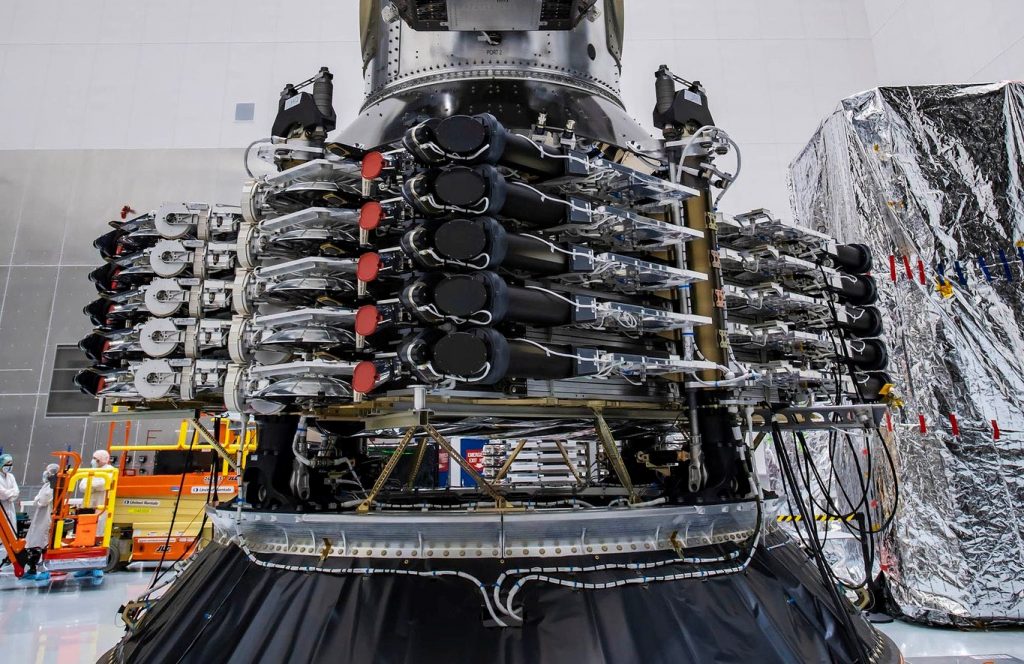

News
SpaceX schedules first West Coast Starlink launch after a quiet July
Spaceflight Now reports that SpaceX has scheduled Starlink’s West Coast launch debut no earlier than August 10th, a mission that will also mark the company’s first launch in almost six weeks.
SpaceX completed its latest Falcon 9 launch – and 20th launch of 2021 – on June 30th, successfully deploying dozens of customer small satellites and three Starlink spacecraft as part of its second dedicated Smallsat Program ‘Transporter’ mission. Since then, the United States’ Eastern Range has been eerily quiet – as if in the eye of the storm that is SpaceX’s 2021 launch manifest. While there has been no official word one way or another, it’s been speculated that the range entered a period of routine – if inconvenient – maintenance that can often last weeks and during which no launches are possible.
Scheduled to launch no earlier than July 30th, Boeing’s second attempt at an uncrewed Orbital Flight Test (OFT-2) of its Starliner crew capsule will apparently punctuate the end of that maintenance period and a return to regular operations for SpaceX. In the meantime, Spaceflight Now’s sources suggest that the company has been making the most of its downtime.
In the last two months, SpaceX has shipped two record-breaking Falcon 9 boosters – collectively responsible for 19 orbital-class launches in the last three years – from Florida to its Vandenberg Air/Space Force Base (VAFB), California launch facilities. Drone ship Of Course I Still Love You (OCISLY) wrapped up an 8000 kilometer (~5000 mi) journey from its Florida home to California’s Port of Long Beach, while brand new drone ship A Shortfall of Gravitas (ASOG) arrived at Port Canaveral to take OCISLY’s place after months of assembly.
All are part of an effort to prepare for an even busier second half of 2021. According to Spaceflight Now, H2 will begin no earlier than August 10th for SpaceX with Starlink’s first dedicated polar launch (known as “Starlink 2-1”) and the first Falcon 9 mission out of Vandenberg in nine months. Combined, Falcon 9 boosters B1049 and B1051 and drone ship OCISLY should be more than capable of pushing SpaceX’s SLC-4E pad to its limits, maxing out around one launch per month for the foreseeable future.
Last month, SpaceX FCC filings also revealed plans for a number of new dedicated Starlink launches from its Cape Canaveral LC-40 pad – unexceptional if it weren’t for the fact that details in the documents implied that those upcoming missions will also be targeting polar orbits. In other words, after successfully launching more than 1600 operational Starlink satellites into mid-inclination equatorial orbits, SpaceX now appears to be laser-focused on building out the constellation’s polar ‘shell.’
Comprised of ~1100 satellites, that polar shell will ultimately give Starlink the ability to deliver internet to aircraft and ships virtually anywhere on Earth – two established connectivity markets that are ripe for disruption. To do so, however, most or all polar Starlink satellites will need optical interlinks – lasers that allow spacecraft to route communications in space and serve customers beyond the reach of land-based ground stations. Thus far, excluding two early 2018 prototypes, SpaceX has launched 13 Starlink satellites with prototype laser links.

CEO Elon Musk has stated that Starlink V2 satellites are set to debut in 2022 and will all have optical interlinks. However, the upcoming “Starlink 2-1” mission’s internal name does raise the question of whether it’s referring to the start of a new constellation ‘shell,’ the first batch of V2 satellites, or both. SpaceX job postings have also hinted at “Starlink V1.5” satellites, which could potentially be as simple as existing V1 satellites outfitted with laser links.
Ultimately, only time, SpaceX, or Elon Musk will tell and the company’s first dedicated Starlink launch is scheduled as few as two weeks from now.

Investor's Corner
Tesla price target boost from its biggest bear is 95% below its current level

Tesla stock (NASDAQ: TSLA) just got a price target boost from its biggest bear, Gordon Johnson of GLJ Research, who raised his expected trading level to one that is 95 percent lower than its current trading level.
Johnson pushed his Tesla price target from $19.05 to $25.28 on Wednesday, while maintaining the ‘Sell’ rating that has been present on the stock for a long time. GLJ has largely been recognized as the biggest skeptic of Elon Musk’s company, being particularly critical of the automotive side of things.
Tesla has routinely been called out by Johnson for negative delivery growth, what he calls “weakening demand,” and price cuts that have occurred in past years, all pointing to them as desperate measures to sell its cars.
Johnson has also said that Tesla is extremely overvalued and is too reliant on regulatory credits for profitability. Other analysts on the bullish side recognize Tesla as a company that is bigger than just its automotive side.
Many believe it is a leader in autonomous driving, like Dan Ives of Wedbush, who believes Tesla will have a widely successful 2026, especially if it can come through on its targets and schedules for Robotaxi and Cybercab.
Justifying the price target this week, Johnson said that the revised valuation is based on “reality rather than narrative.” Tesla has been noted by other analysts and financial experts as a stock that trades on narrative, something Johnson obviously disagrees with.
Dan Nathan, a notorious skeptic of the stock, turned bullish late last year, recognizing the company’s shares trade on “technicals and sentiment.” He said, “From a trading perspective, it looks very interesting.”
Tesla bear turns bullish for two reasons as stock continues boost
Johnson has remained very consistent with this sentiment regarding Tesla and his beliefs regarding its true valuation, and has never shied away from putting his true thoughts out there.
Tesla shares closed at $431.40 today, about 95 percent above where Johnson’s new price target lies.
News
I subscribed to Tesla Full Self-Driving after four free months: here’s why
It has been incredibly valuable to me, and that is what my main factor was in considering whether to subscribe or not. It has made driving much less stressful and much more enjoyable.

I have been lucky enough to experience Tesla Full Self-Driving for the entire duration of my ownership experience for free — for four months, I have not had to pay for what I feel is the best semi-autonomous driving suite on the market.
Today, my free trial finally ran out, and I had two choices: I could go without it for a period until I felt like I absolutely needed it, or I could subscribe to it, pay $99 per month, and continue to experience the future of passenger transportation.
I chose the latter, here’s why.
Tesla Full Self-Driving Takes the Stress Out of Driving
There are a handful of driving situations that I don’t really enjoy, and I think we all have certain situations that we would just rather not encounter. This is not to say that I won’t ever experience them as someone who has driven a car for 15 years (it feels weird saying that).
I don’t love to drive in cities; I really don’t like driving on I-695 on my way to Baltimore, and I truly hate parallel parking. All three things I can do and have done, all three within the past few weeks, too.
It takes all the stress out of city driving pic.twitter.com/q0SPPrH4HU
— TESLARATI (@Teslarati) December 4, 2025
However, if I can avoid them, I will, and Tesla Full Self-Driving does that for me.
Tesla Full Self-Driving Eliminates the Monotony
I drive to my alma mater, Penn State University, frequently in the Winter as I am a season ticket holder to Wrestling and have been for 16 years now.
The drive to State College is over two hours and over 100 miles in total, and the vast majority of it is boring as I travel on Rt 322, which is straight, and there is a lot of nature to look at on the way.
I am willing to let the car drive me on that ride, especially considering it is usually very low traffic, and the vast majority of it is spent on the highway.
The drive, along with several others, is simply a boring ride, where I’d much rather be looking out the windshield and windows at the mountains. I still pay attention, but having the car perform the turns and speed control makes the drive more enjoyable.
Tesla Full Self-Driving Makes Navigating Easier
Other than the local routes that I routinely travel and know like the back of my hand, I’ve really enjoyed Full Self-Driving’s ability to get me to places — specifically new ones — without me having to constantly check back at the Navigation.
Admittedly, I’ve had some qualms with the Nav, especially with some routing and the lack of ability to choose a specific route after starting a drive. For example, it takes a very interesting route to my local Supercharger, one that nobody local to my area would consider.
But there are many times I will go to a new palce and I’m not exactly sure where to go or how to get there. The Navigation, of course, helps with that. However, it is really a luxury to have my car do it for me.
To Conclude
There was no doubt in my mind that when my Full Self-Driving trial was up, I’d be subscribing. It was really a no-brainer. I am more than aware that Full Self-Driving is far from perfect, but it is, without any doubt, the best thing about my Tesla, to me.
It has been incredibly valuable to me, and that is what my main factor was in considering whether to subscribe or not. It has made driving much less stressful and much more enjoyable.
🚨 How I’ve gotten Tesla Full Self-Driving for free…until now
Watch me subscribe to Tesla FSD! https://t.co/bjK7EEOptR pic.twitter.com/cs5CmN5PdJ
— TESLARATI (@Teslarati) January 7, 2026
News
Tesla Diner becomes latest target of gloom and doom narrative

The Tesla Diner has been subject to many points of criticism since its launch in mid-2025, and skeptics and disbelievers claim the company’s latest novel concept is on its way down, but there’s a lot of evidence to state that is not the case.
The piece cites anecdotal evidence like empty parking lots, more staff than customers during a December visit, removed novelty items, like Optimus robot popcorn service and certain menu items, the departure of celebrity chef Eric Greenspan in November 2025, slow service, high prices, and a shift in recent Google/Yelp reviews toward disappointment.
The piece frames this as part of broader Tesla struggles, including sales figures and Elon Musk’s polarizing image, calling it a failed branding exercise rather than a sustainable restaurant.
This narrative is overstated and sensationalized, and is a good representation of coverage on Tesla by today’s media.
Novelty Fade is Normal, Not Failure
Any hyped launch, especially a unique Tesla-branded destination blending dining, Supercharging, and a drive-in theater, naturally sees initial crowds taper off after the “Instagram effect” wears down.
Tesla makes major change at Supercharger Diner amid epic demand
This is common for experiential spots in Los Angeles, especially pop-up attractions or celebrity-backed venues. The article admits early success with massive lines and social media buzz, but treats the return to normal operations as “dying down.”
In reality, this stabilization is a healthy sign of transitioning from hype-driven traffic to steady patronage.
Actual Performance Metrics Contradict “Ghost Town” Claims
- In Q4 2025, the Diner generated over $1 million in revenue, exceeding the average McDonald’s location
- It sold over 30,000 burgers and 83,000 fries in that quarter alone. These figures indicate a strong ongoing business, especially for a single-location prototype focused on enhancing Supercharger experiences rather than competing as a mass-market chain
It’s not a ghost town lol. The @Tesla Diner still had over 30,000 burger orders and 83,000 fries orders in Q4. The diner generated over $1M in revenue in Q4, a $4M annual run rate, which is more than the average McDonald’s…. pic.twitter.com/XvAGLUqxej
— Sawyer Merritt (@SawyerMerritt) January 4, 2026
Conflicting On-the-Ground Reports
While the article, and other similar pieces, describe a half-full parking lot and sparse customers during specific off-peak visits, other recent accounts push back:
- A January 2026 X post noted 50 of 80 Supercharger stalls were busy at 11 a.m., calling it “the busiest diner in Hollywood by close to an order of magnitude
TESLA DINER 🍔
Frantic!!!
Crazy busy. pic.twitter.com/wMbmr8SFFn
— Rich & Sharon (@HullTeslaModel3) January 4, 2026
- Reddit discussions around the same time describe it as not empty when locals drive by regularly, with some calling the empty narrative “disingenuous anti-Tesla slop.”
When we visited it last week it was packed. We had to wait to enter, get a table and go to the restroom. We were lucky to find a spot to charge.
— Rani G (@ranig) January 4, 2026
Bottom Line
The Tesla Diner, admittedly, is not the nonstop circus it was at launch–that was never sustainable or intended. But, it’s far from “dying” or an “empty pit stop.”
It functions as a successful prototype: boosting Supercharger usage, generating solid revenue, and serving as a branded amenity in the high-traffic EV market of Los Angeles.








